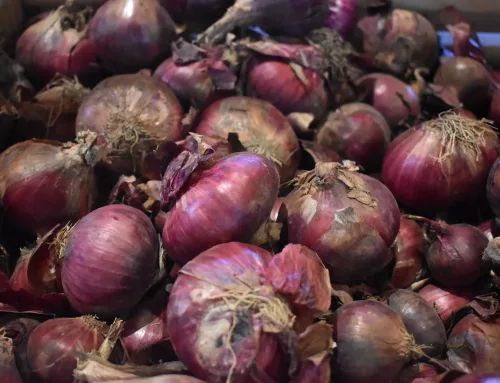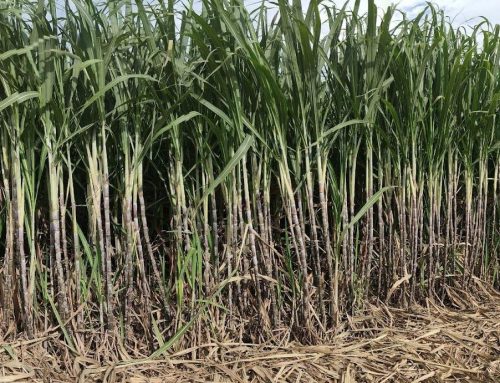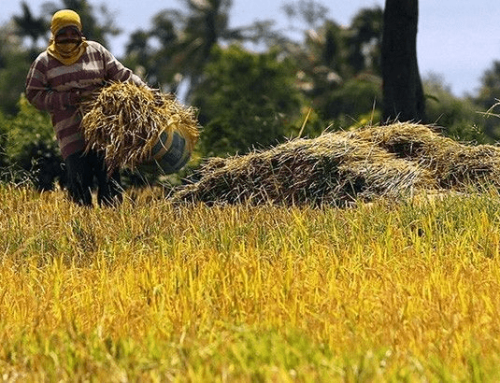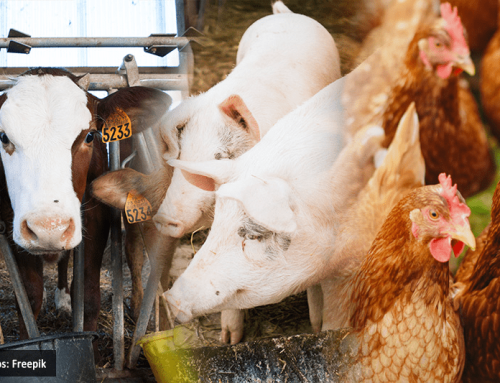In this Article
Explore the dynamics behind the current status of the country’s chicken industry, including market trends, projected shortages, import impacts, and DOST-PCAARRD’s initiatives to stabilize and enhance the Philippine poultry sector.
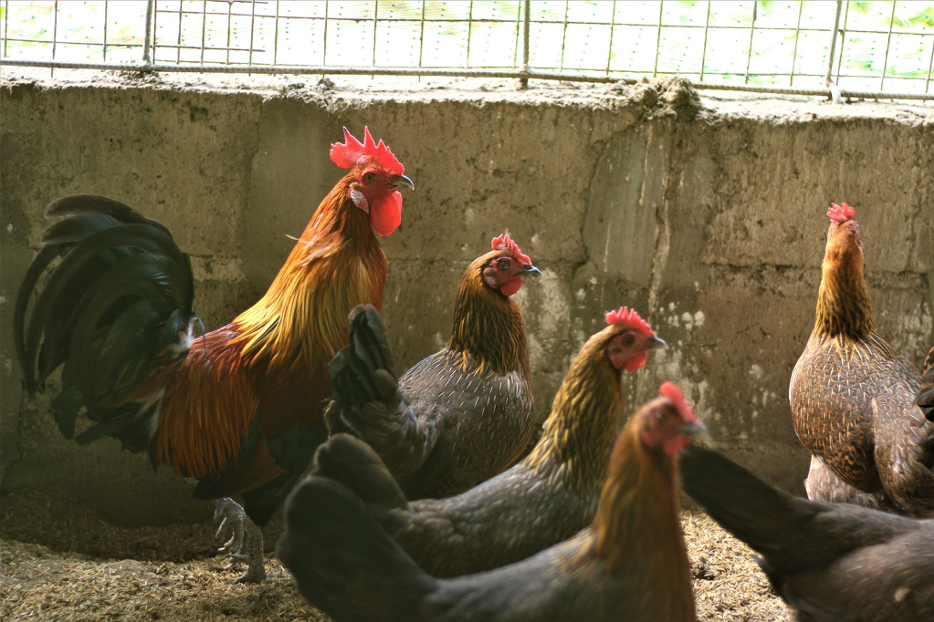
Supply and Price Trends in the Poultry Sector for Q1 of 2024
The latest data from the Philippine Statistics Authority (PSA) showed a 7.67% increase in chicken production from 470,207.84 metric tons (MT) in the first quarter (Q1) of 2023 to 506,277.23 MT in the same period of 2024. This is despite the challenges brought by El Niño as commercial poultry producers utilized cooling facilities to mitigate the effects of high temperatures. The rise in production led to lower farmgate and retail prices of chicken meat. Farmgate prices of chicken broiler decreased by 8.23%, from Php 137.43 per kilogram (kg) in Q1 2023 to Php 126.12 per kg in Q1 2024, while retail prices of whole dressed chicken fell by 4.51%, from Php 209.31 per kg in 2023 to Php 199.86 per kg in 2024.
Projected Shortage in Local Supply of Chicken Meat and the Sudden Price Surge in July
Looking ahead, a significant chicken meat shortage is projected for 2024. On July 16, 2024, the United States Department of Agriculture Foreign Agricultural Service (USDA FAS) released a report titled “Livestock and Poultry: World Markets and Trade,” which revealed that the national chicken consumption of the Philippines is expected to reach 1.998 million MT. In addition, production is forecasted at 1.54 million MT, which will require the country to import 465,000 MT of chicken meat. This shortage is expected to drive up chicken prices at both farmgate and retail levels, highlighting the challenges faced by the poultry sector in meeting the country’s demand.
The impact of this projected shortage was already evident on July 17, 2024, with retail prices in local markets of Metro Manila surging to a record high. The Department of Agriculture (DA) reported prices for whole-dressed chickens ranging between Php 190 per kg and Php 250 per kg, up from Php 160 per kg to Php 220 per kg in the previous month. United Broiler Raisers Association (UBRA) President Jose Gerardo Feliciano attributed this price spike to reduced broiler stocks, which have led producers to decrease flock sizes in response to recent financial losses. Furthermore, the farmgate price for day-old chicks has nearly doubled, reflecting tight supply conditions.
On July 18, 2024, DA Undersecretary Deogracias Victor Savellano noted that rising production costs, including higher prices for imported feed additives and the impact of poultry diseases, boosted the price surge. Despite assurances of sufficient broiler stocks, meeting market demand remains challenging, particularly concerning chicken sizes.
Increasing Supply and Prices of Imported Chicken Meat
The rising chicken meat prices in local markets have heightened the appeal of imports. On July 18, 2024, the Bureau of Animal Industry (BAI) reported a 4.98% increase in chicken meat imports from 172.64 million kg in the first five months of 2023 to 181.23 million kg in the same period of 2024. Chicken meat imports now account for 34.5% of the country’s total meat imports, with Brazil, the US, and Australia being the leading suppliers.
However, the Meat Importers and Traders Association (MITA) cautioned that the rising international prices and a weak peso, which closed at Php 58.295 to the dollar as of July 18, 2024, could further increase imported meat prices. MITA President Emeritus Jesus Cham highlighted that the extension of low tariffs on pork and mechanically deboned chicken until 2028, under Executive Order No. 62, can help stabilize the import market. Nonetheless, local poultry farmers face intensified competition from imports, which could affect their market share and profitability. While higher domestic prices offer short-term benefits, farmers must navigate fluctuating international prices and shifting consumer preferences towards other meats in the long run.
Despite challenges such as El Niño, which stressed broilers and led to increased production costs, the sector demonstrated resilience. UBRA anticipates a 4% year-on-year growth in poultry output for Q2 2024. Investments made by commercial poultry growers in technology mitigated the adverse effects of the weather, demonstrating the importance of innovation in food production. However, the Philippines’ spending on research and development (R&D) remains low, at less than 1% of GDP, far behind countries like Vietnam and Malaysia. Increased investment in technology and R&D is crucial for improving agricultural productivity and ensuring food security.
PCAARRD Initiatives for Enhancing the Local Poultry Industry
In light of the challenges faced by the local poultry industry, the Department of Science and Technology – Philippine Council for Agriculture, Aquatic and Natural Resources Research and Development (DOST-PCAARRD) is actively working to enhance the local poultry sector through innovative initiatives. One such program is the DOST-PCAARRD Native Chicken Industry Strategic Plan (ISP), which has made notable strides in enhancing poultry production. The ISP has achieved significant progress by raising the average egg production to 120 eggs per hen per year, cutting mortality rates to 20% per cycle, and setting up native chicken conservation farms at prominent sites like Western Visayas State University (WVSU) and Western Mindanao State University (WMSU). Below are the other initiatives of DOST-PCAARRD for the enhancement of the country’s poultry sector.
Development of Caraga Black Native Chicken
The development of Caraga Black native chicken is poised to enhance productivity and efficiency through effective breeding and selection processes. This initiative aims to create a breeding population of Caraga Black chickens that are resilient to climate change and exhibit desirable traits such as growth, hatchability, taste preference, and disease resistance. Additionally, these chickens will serve as a valuable genetic resource available through dispersal programs to various stakeholders, including farmers, people’s organizations, agrarian reform beneficiaries, local government units, and educational institutions. Overall, the project will provide a healthier poultry option for consumers while supporting agricultural and community development.
Establishment of Sustainable Darag Native Chicken Production
The project aims to create a native chicken breeding and hatchery management system to ensure a reliable supply of breeder and slaughter chickens with predictable performance and consistent quality in commercial quantities. By the project’s conclusion, it will establish a free-range breeder native chicken management technology and hatchery operation protocol, and seek international certification for the Darag breed.
Artificial Insemination in Philippine Native Chicken
Another one of DOST-PCAARRD’s initiatives is the proposed project that aims to enhance the reproductive efficiency of Philippine native chickens by testing and validating artificial insemination (AI) technology. It focuses on developing semen processing and AI protocols that align with local breeding and farm management practices. Key objectives include characterizing the semen of Darag and ZamPen roosters, assessing the impact of semen processing and short-term preservation on its fertilizing capacity, and evaluating AI protocols on Darag and ZamPen hens. Additionally, the project will analyze the fertility and hatchability of eggs fertilized through AI, examine the egg production performance of Darag and ZamPen hens in layer cages, and determine the technical and economic feasibility of implementing AI in native chicken breeding and production.
NICER Program
The accelerated R&D program Niche Centers in the Regions for R&D or NICER, composed of three (3) projects, is set to establish an R&D center for native chickens in Region IX to advance the production of high-quality breeder stocks through enhanced breeding, feeding, and management strategies. The first project titled, “Enhancement of Breeding and Feeding Management Systems for Increased Productivity of ZamPen Native Chicken,” aims to boost ZamPen native chicken production using innovative breeding methods, developing feed mixes from agro-industrial by-products, and evaluating cost-effectiveness while promoting these advancements through training and informational materials.
The second project, “Molecular and Nutrient Evaluation of ZamPen Native Chicken,” focuses on identifying genetic markers linked to meat quality traits, creating a reference genome, and analyzing the chemical composition of the meat. Meanwhile, the third project titled,”Product Development, Promotion, and Marketing of ZamPen Native Chicken,” is dedicated to developing products from culled native chickens, assessing carcass yields and profitability, and conducting market surveys to gauge consumer and supplier needs. Collectively, these projects aim to address low production levels by improving productivity and quality, thereby enhancing the overall resilience and sustainability of the poultry sector.
Moving forward, the Native Chicken ISP aims to further enhance egg production and reduce mortality rates, increase the number of native chickens processed, and develop privately-run native chicken breeding farms. These initiatives are essential for tackling the ongoing supply deficits and price fluctuations, thereby fostering a more improved and sustainable poultry sector.
References: Arcalas, J.E. (2024, July 17). Chicken prices rise to P250 per kilo. Philippine Star. Retrieved July 18, 2024 from https://www.philstar.com/headlines/2024/07/17/2370719/chicken-prices-rise-p250-kilo
Business Mirror. (2024, July 18). Poultry industry’s tech investments pay off, shielding our growers from El Niño’s impact. Business Mirror Editorial. Retrieved July 18, 2024 from https://businessmirror.com.ph/2024/05/15/poultry-industrys-tech-investments-pay-off-shielding-our-growers-from-el-ninos-impact/
Dayo, M. (2022, April 27). Artificial Insemination. PCAARRD ISP Web. Retrieved July 19, 2024 from https://ispweb.pcaarrd.dost.gov.ph/artificial-insemination-as-a-tool-in-conservation-sustainable-breeding-and-utilization-of-philippine-native-chickens/
Dayo, M. (2022, April 27). Accelerated R&D Program NICER. PCAARRD ISP Web. Retrieved July 19, 2024 from https://ispweb.pcaarrd.dost.gov.ph/accelerated-rd-program-nicer/
Dayo, M. (2022, April 27). Development of Caraga Black Native Chicken through Selection and Breeding as Potential Niche Product of Caraga Region. PCAARRD ISP Web. Retrieved July 19, 2024 from https://ispweb.pcaarrd.dost.gov.ph/development-of-caraga-black-native-chicken-through-selection-and-breeding-as-potential-niche-product-of-caraga-region/
Dayo, M. (2022, April 27). Establishment of Sustainable Selection, Breeding, and Hatchery operation for Darag Native Chicken production. PCAARRD ISP Web. Retrieved July 19, 2024 from https://ispweb.pcaarrd.dost.gov.ph/establishment-of-sustainable-selection-breeding-and-hatchery-operation-for-darag-native-chicken-production/
Halili, A.H. (2024, July 17). Meat imports up 10% led by pork, chicken. Business World. Retrieved July 18, 2024 from https://www.bworldonline.com/economy/2024/07/16/608501/meat-imports-up-10-led-by-pork-chicken/
Halili, A.H. (2024, July 18). Chicken prices expected to fall in August. Business World. Retrieved July 18, 2024 from https://www.bworldonline.com/economy/2024/07/17/608800/chicken-prices-expected-to-fall-in-august/
Halili, A.H. (2024, July 18). Meat costs expected to rise due to high global prices, peso weakness. Business World. Retrieved July 18, 2024 from https://www.bworldonline.com/economy/2024/07/17/608845/meat-costs-expected-to-rise-due-to-high-global-prices-peso-weakness/
Menxias, E. (2024, July 16). ‘Pinas kapos sa suplay ng manok, baboy. Abante News Online. Retrieved July 18, 2024 from https://www.abante.com.ph/2024/07/14/pinas-kapos-sa-suplay-ng-manok-baboy/
Pelonia, A. (2024, May 20). ‘Poultry output will rise in Q2 despite ill effects of El Niño’. Business Mirror. Retrieved July 18, 2024 from https://businessmirror.com.ph/2024/05/20/poultry-output-will-rise-in-q2-despite-ill-effects-of-el-nino/

